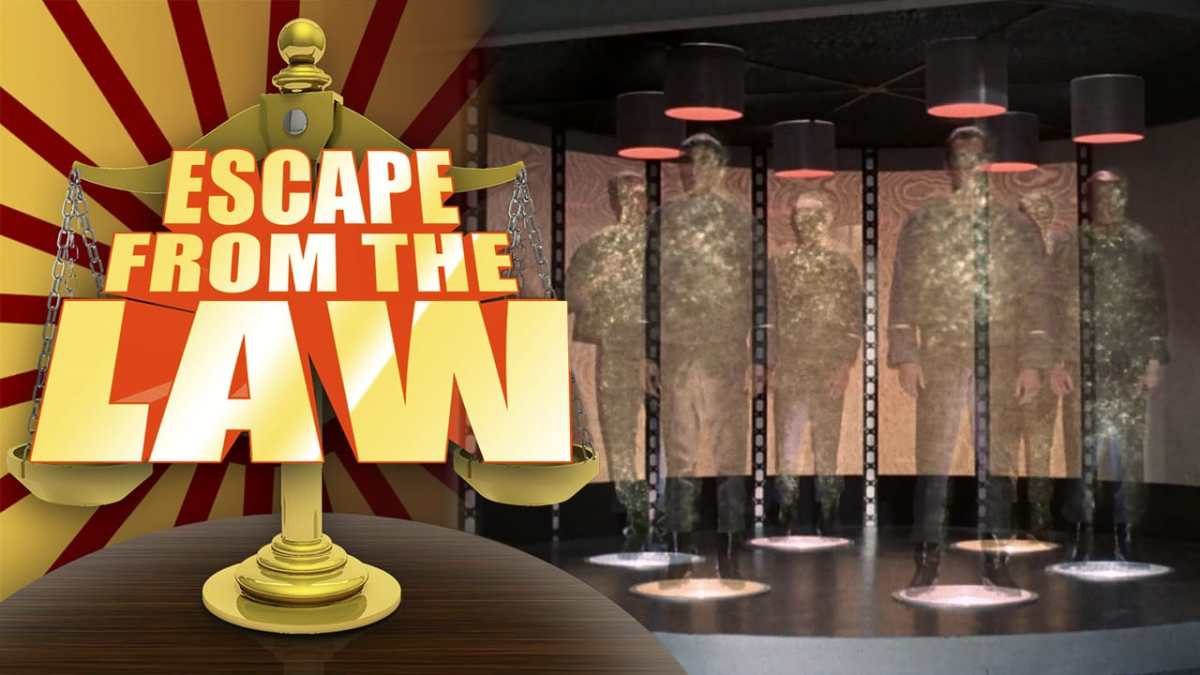Welcome to Part III of the Transporter Conundrum. In the previous segments, I explored how Star Trek transporters can be used to understand how the law views personhood and whether transporters are too risky for their own good. This week, I will consider the challenges associated with fixing transporter accidents.
We can break this topic into two discrete questions: When would the law require one to fix transporter mistakes, and when would the law prohibit one from fixing mistakes? In all other scenarios, the law is ambivalent towards corrective action.
For the purposes of this inquiry, I’m only concerned with mistakes that can be fixed. Thus, we don’t need to consider scenarios where transporters lead to death, nor do we need to consider irreversible transformations. Obviously, one could only be required to fix a malfunction if one has the ability to fix the malfunction.
Prohibited Corrections
One of the most important values in the American justice system is liberty. As a general rule, we are free to carry out any action unless there is a statute or rule of law that prohibits that action. While legal prohibitions come in a variety of forms, most can be reduced to a simple principle: do not interfere with the rights or liberties enjoyed by others. For example, I am free to travel where I please, except that I am not allowed to trespass on someone else’s property, as that would interfere with their right to own and control their land.

When it comes to transporters, the same principle applies — a person can correct a transporter malfunction, provided that the correction would not interfere with the rights of another. The best example of such a scenario was presented in the Star Trek: Voyager episode “Tuvix,” in which a transporter malfunction merges two crewmen — Tuvok and Neelix — into a single entity, Tuvix.
While Tuvix has traits from both Tuvok and Neelix, the combination of their DNA, personalities, and memories results in the creation of a new person who is distinct from both original crewmen. Stemming back to conversation from Part I, we can say that Tuvix has independent rights under any conception of life because he has a unique body and a unique mind.
Because of technical constraints, the only way to “correct” the transporter mistake would be to “kill” Tuvix by separating his genetic pattern and recreating Tuvok and Neelix. In some circumstances, the law recognizes that one can engage in illegal conduct in order to prevent a greater harm. This is called the necessity defense. (I’ve written about the necessity defense before, when discussing the zombie apocalypse.) But the necessity defense can never be used to justify murder. Killing is illegal — even if one kills to save another, and even if one kills to save two people.
There are other transporter malfunctions that implicate the same issue. In The Original Series’s “The Enemy Within,” Captain Kirk is split into good and evil components. Likewise, in The Next Generation’s “Rascals,” Captain Picard and several other crew members are transformed into children. Whether a correction in these scenarios is prohibited depends on whether the transformed individual can be viewed as a distinct person from the original. As it turns out, in both scenarios, there is good reason to think that the transformed individual is not distinct from the original.
Unlike Tuvix, neither of Captain Kirk’s split personalities has a complete, independent mind. Instead, each one constitutes a half-Kirk, and neither can function fully or effectively in the absence of the other half. As a result, the act of recombining the two is better viewed as curing a mental disorder than as ending a life. In this sense, the separation is analogous to in Onward, where a botched spell succeeds in resurrecting a character — but only from the waist down. No one would say it is improper to combine the resurrected lower half with a soon-to-be-resurrected upper half. For the same reason, one would be hard-pressed to object to combining Kirk’s evil half with his good half, or to argue that it was a mistake to restore Captain Picard’s literal manhood.

Required Corrections
Unlike most European countries, the United States does not require individuals to help others in need. For example, there is no obligation to help hitchhikers reach their destination or to help someone whose car has broken down on the side of a road. Likewise, a person does not have any legal obligation to call an ambulance if they see a person collapse or to call the police when they see a mugging on the street.
The same rule would apply to transporter malfunctions. A person who simply witnesses a transporter malfunction or encounters the victim of a malfunction — perhaps by seeing a Starfleet officer arrive at what is obviously the wrong location — would not have any obligation to act. (Of course, this would only apply to U.S. law — the law of an alien planet could conceivably require anything.)
Nevertheless, there are two scenarios in which the law recognizes an obligation to act. The first scenario is where one has a special relationship with the victim. For example, parents are required to take care of their children. A more pertinent example here is that Starfleet captains and military commanders have an obligation to protect their subordinates. Thus, they would be derelict in their duties if they refused medical treatment to a wounded soldier, or if they knowingly abandoned a crew member on the wrong half of a planet.
Because all of the transporter malfunctions we have seen are associated in some way with Starfleet, each scenario involves some sort of obligation to correct the malfunction. In fact, returning to our discussion of “Tuvix,” the obligation to act is one of the strongest arguments one could make in favor of separating Tuvix. One could argue that Captain Janeway had an obligation to her crew members that takes precedence over her obligation to Tuvix. On balance, I think Janeway’s obligation not to kill should take precedence, but framing the issue in terms of a captain’s obligations makes the question of whether to separate more challenging.

Note that obligations based on special relationships exist regardless of whether the person holding the obligation caused the accident — parents are required to take an injured child to the hospital even if the child’s injury was caused by someone else’s negligence.
The second scenario in which people have an obligation to correct an injury or harm is if they caused the harm in the first place. This is why it is illegal to “hit and run” and why parties responsible for creating an injury are liable for any resulting medical expenses. When it comes to transporters, this scenario is largely irrelevant, since, as explained above, Starfleet would have an obligation to act regardless of its culpability.
Getting a Signal Lock
Transporters present a staggering array of legal questions and challenges. If you think about it, this makes sense. The two most important rights written into the Constitution are the right to life and the right to liberty. Transporters squarely implicate both of these rights. They implicate the right to life, since they call into question what it means to be alive, and they implicate the right to liberty, since there can be no greater liberty than to go anywhere, instantly, at any time. But with great power liberty there must also come great responsibility, and the sheer number of transporter-related malfunctions and screw-ups shows us that the responsibility and associated liabilities are great indeed.
We’re still a few years away from the 24th century, and we’re still a few years away from cracking transporter technology. But as far as I’m concerned, that’s a good thing. If this series has revealed anything, it’s that society could use some additional time to think about the “big questions” and to figure out just how transporters would or should fit into that equation. For now, I’m happy to stick to self-driving cars — so long as I can teach the car to recognize my command to “Engage.”





